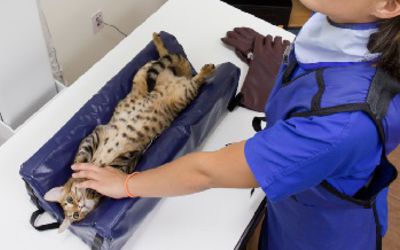
Veterinary radiography has progressed tremendously over the years. Modern machinery, combined with state-of-the-art techniques, ensures that our furry pals receive the best care possible. One pivotal progression in this domain is the use of vet x-ray positioning aids. This guide probes deep into the universe of x-ray positioning aids, giving you a comprehensive look.
Understanding Vet X-ray Positioning Aids
Before plunging into the details, let's first get the fundamental concept. In essence, x-ray positioning aids support veterinary professionals obtain the most clear images while guaranteeing minimal discomfort for the animal. They play a crucial role in holding pets in the right position, lessening movement, and guaranteeing consistent, high-quality results.
Why are X-ray Positioning Aids Imperative in Veterinary Practice?
Safety for Both Animal and Technician: Reducing animal movement is important during x-ray processes. This not only guarantees clear images but also reduces the risk of radiation exposure for both the animal and the technician.
Consistent Image Quality: Consistency is key when it comes to x-rays. Vet x-ray positioning aids aid in achieving that by guaranteeing animals are held in the appropriate posture for clear images.
Reduction in Retakes: If a pet shifts during the x-ray operation, the chances are high that the images might appear hazy. Positioning aids significantly reduce such events, leading to fewer retakes.
Popular Types of Vet X-ray Positioning Aids
Foam Positioners: These airy and long-lasting positioners are perfect for holding up the animal's body parts during radiography. They arrive in various shapes and sizes made to fit different animals and body parts.
Sandbags: They're exceptional for stabilizing and positioning. Their weight helps stop movement during the x-ray operation.
Tape and Straps: These can be used to bind limbs in place. They're gentle on the skin and can be altered based on the pet's comfort.
Immobilisation Devices: For pets that are especially nervous, immobilisation devices can provide a safe way to hold them still during the x-ray process without inflicting any discomfort.
Selecting the Right X-ray Positioning Aids for Your Veterinary Clinic
With the array of aids at one's disposal, choosing the suitable one might seem daunting. However, think about the following factors:
Type of Animals Treated: A clinic largely dealing with small pets might have different necessities than one coping with larger animals.
Frequency of Use: Durable positioning aids are a must for busy clinics.
Budget: While it's imperative not to compromise on quality, vet clinics also need to make sure they're making economical decisions.
Tips for Using Vet X-ray Positioning Aids Successfully
Training is Vital: Make sure that all your staff are properly trained in using the aids. This will ensure the safety and comfort of the animals while securing the best possible x-ray images.
Regular Maintenance: Like all machinery, vet x-ray positioning aids also deteriorate with time. Regularly check for wear and tear and replace them when needed.
Prioritise Comfort: While securing the flawless image is vital, it's equally vital to guarantee the animal's comfort. Always verify that any restraints or positioners used aren't causing any discomfort to the animal.
Vet x-ray positioning aids have changed the field of veterinary radiography. They have not only made certain the generation of clear, high-quality images but have also played a vital role in improving the safety and comfort of the pets experiencing the process. As veterinary specialists, it's our obligation to guarantee we're equipped with the best tools and knowledge to offer our furry clients the best care available.
If you're searching to improve your veterinary clinic with the most recent x-ray positioning aids or want more information about them, visit xray4vets. Jump into a universe of advanced veterinary instruments and boost the care you render to your adored animal patients.